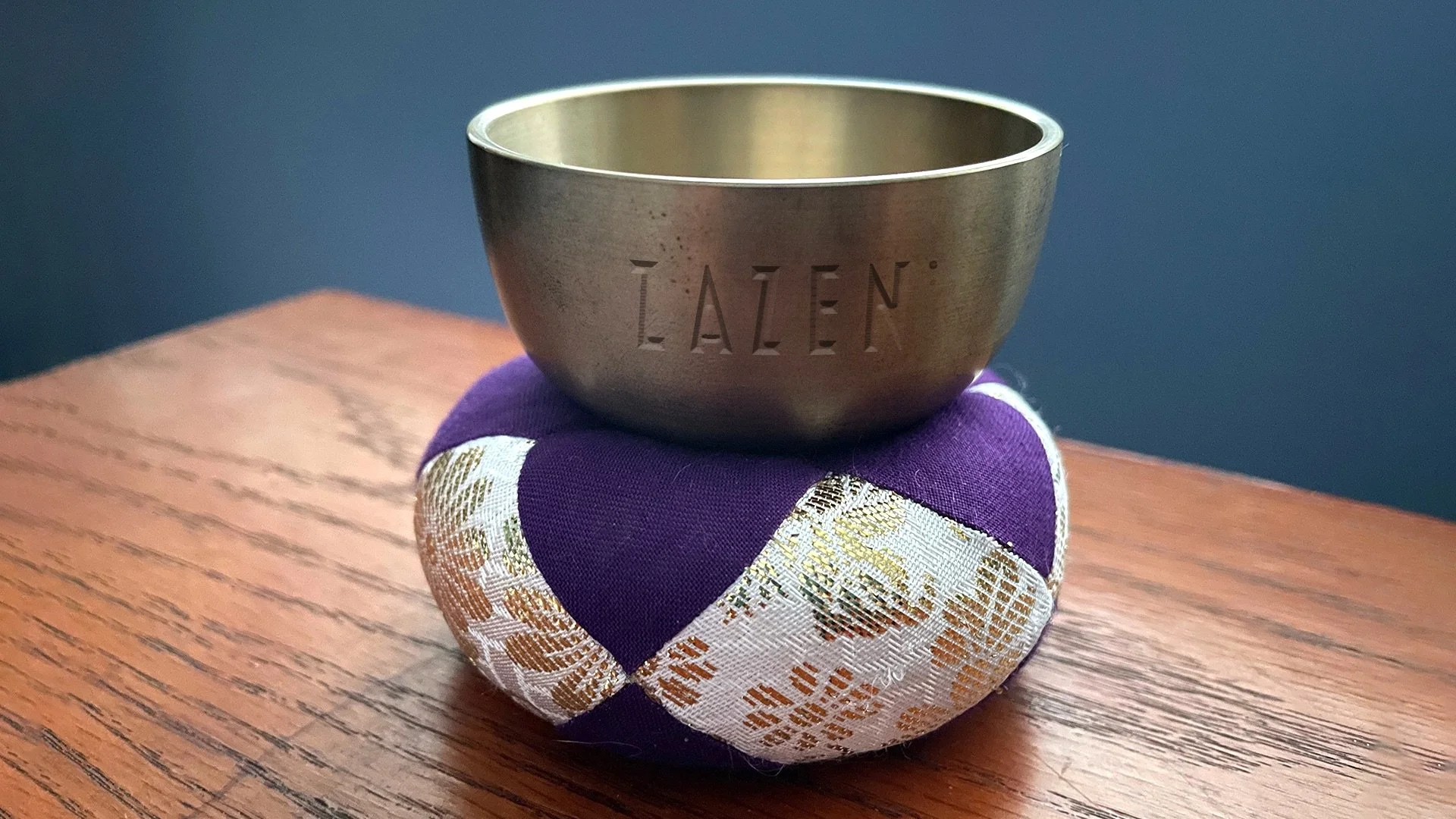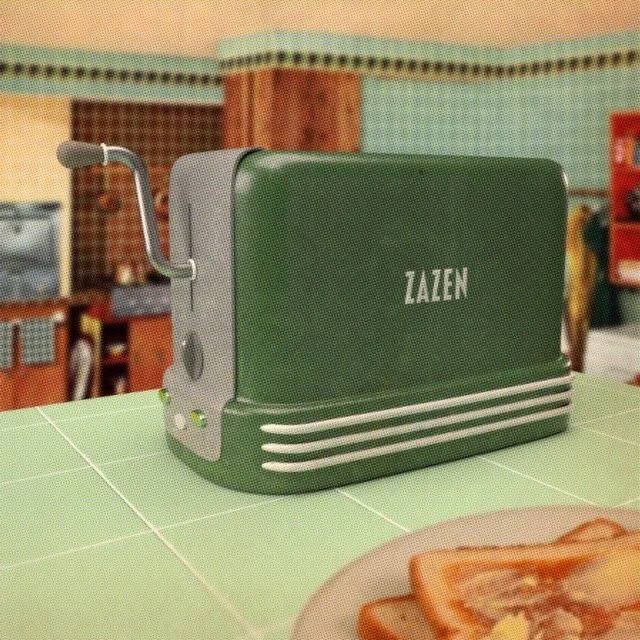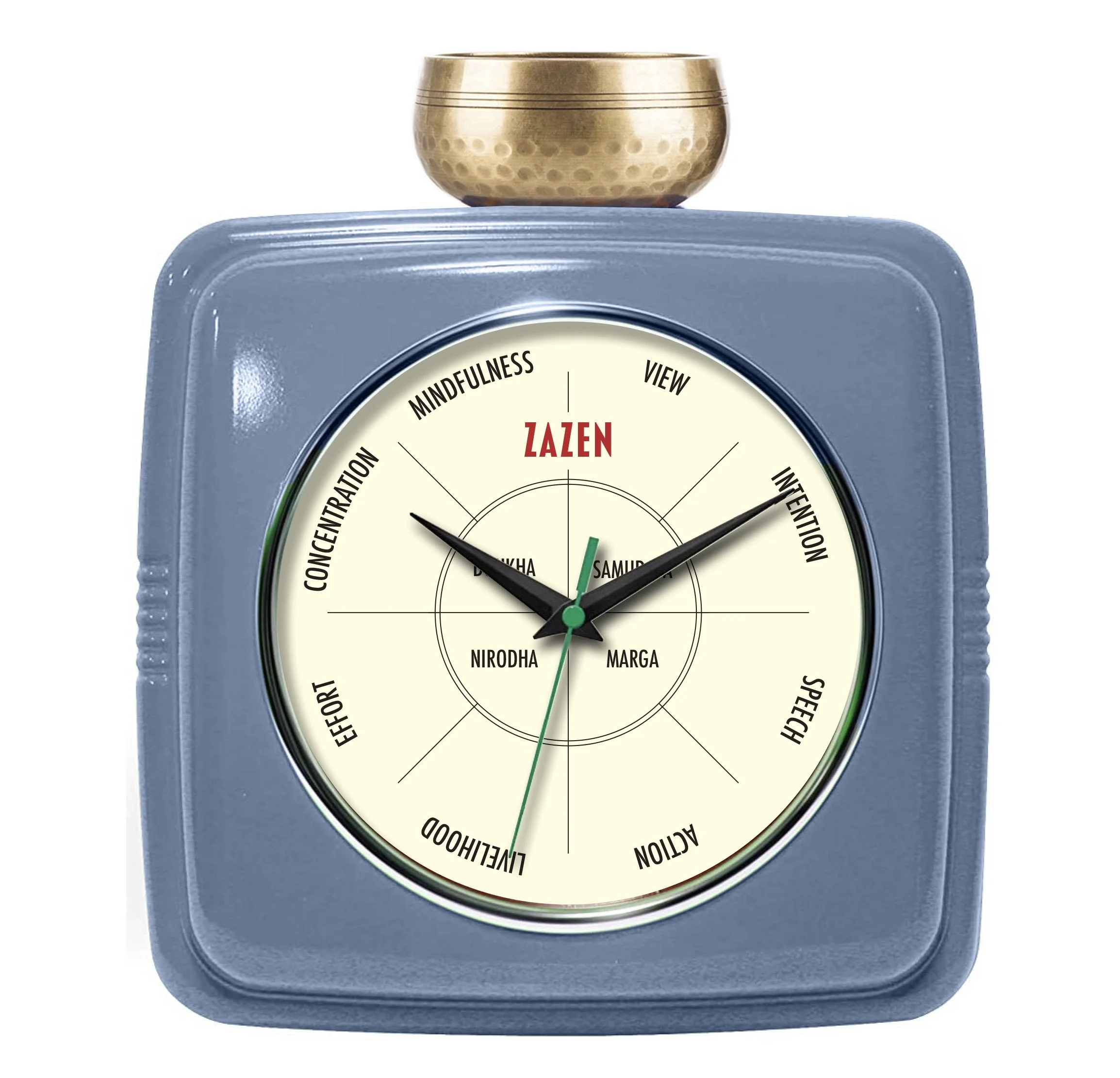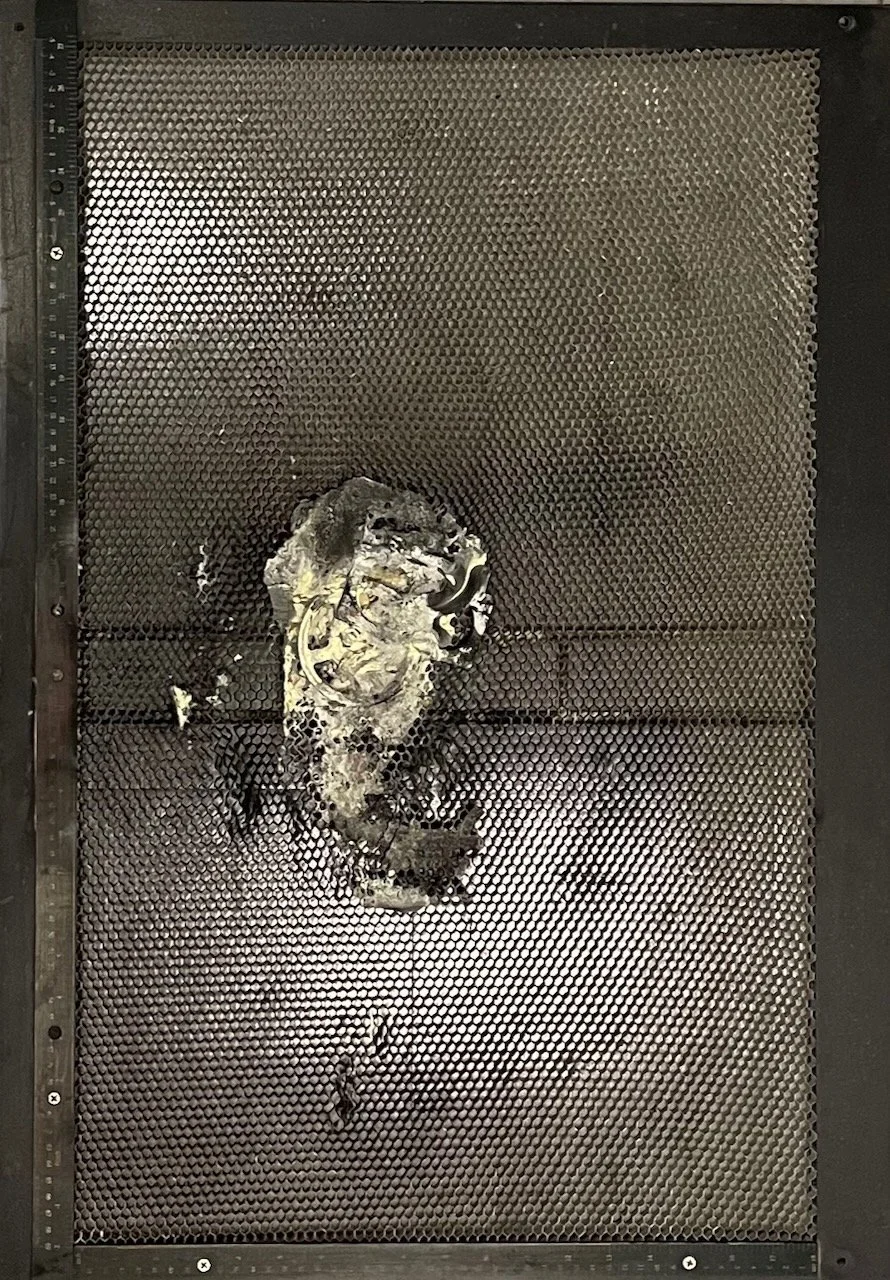
The Zazen Manufacturing Company
The Zazen Manufacturing Company is a project where I document the story of an imaginary brand of Buddhist home appliances.

When something appears,
shine your light on it.
Have confidence in the light
that is always working inside you.
Whatever confronts you,
don’t believe it.
–Linji
About the Zazen Manufacturing Company
For the past several years, I’ve been interested in inventing, constructing, and documenting the peculiar history of the Zazen Manufacturing Company, America’s largest and most successful manufacturer of Buddhist home appliances.
Founded in 1925 in Elkhart, Indiana by a small group of Buddhist monks, the Zazen company took its name from the practice of seated meditation, a foundation of Zen Buddhist practice
The Zazen company originally manufactured brass meditation bells, which were prized for their clear sound and elegant design. They are considered collector’s items today.
The Koan-O-Scope
In the early 1930’s, the small group of monks who comprised the Zazen Manufacturing Company decided to move beyond their core business of meditation bells. They found inspiration in an early film-viewing device called a Kinetoscope. Kinetoscopes pre-dated film projectors, and were designed to be viewed by one person, who advanced the film manually to watch it. The engineers at Zazen wondered if this technology could be adapted to create a device to enhance buddhist practice.
The result was the Koan-O-Scope, a device which — like the kinetoscope — contained short reels of film which the viewer could advance at their own speed. Clever engineering allowed the Koan-O-Scope to display up to thirty different films, which the company promoted as visual koans designed for contemplation during meditation.
Early products
Inspired by the success of the bells, the monks began to explore the manufacture of other products. In 1934, the original Koan-O-Scope was released, the first of many home appliances that brought the fundamentals of Buddhist practice to mainstream America.
The Koan-O-Scope was a hit, and by the 1950’s, items like the mindful toaster and and mindful clock could be found in Buddhist households across the country.
Zazen Mindful Toaster, 1951
Zazen Mindful Clock, 1955,
showing the eightfold path and the four noble truths

The growth of the company
By the end of the 1950’s, Zazen employed nearly three hundred people and was growing fast. A new factory was constructed in Elkhart, a new logo was designed, and the company began to look at ways to expand into mainstream America. After much internal discussion, the decision was made to throw their resources into the production of the Ensomatic One.
The new Zazen logo
The Ensomatic One
In Zen practice, an enso is a circular form, usually drawn or painted in a single, uninhibited brushstroke. It can symbolize many things, including strength, the universe, everything and nothing.
The Ensomatic Model One was released in 1961. It was a portable device modeled on a record player that allowed users to easily create their own ensos automatically.
Coinciding with the rise of the counterculture, the hi-fi boom, and an increased appreciation for Zen tradition, the timing could not have been better. The success of the Ensomatic One led directly to the development of the Ensomatic Two, the Interconnector series, and the wide variety of Zazen Buddhist appliances that we know and love today.
The Ensomatic One
The Interconnector Model 1
In the early 1970s, Zazen began work on their most ambitious product yet: the Interconnector Model 1. This machine would receive special broadcasts on the UHF frequency, which it could display in a split-screen format on a tiny TV screen. The user could tune in different channels on the sub-frequency and juxtapose seemingly unrelated broadcasts next to one another. Through this, the viewer was challenged to consider the interconnected nature of the world.
Unfortunately, an accident during production of the Interconnector resulted in fire at the manufacturing plant, destroying the prototype, the equipment, and years worth of development.
This was a huge blow, both to morale and to the financial security of Zazen, which had leveraged itself significantly to fund the development of the device. The prototype was completely destroyed, melted and fused to the remains of the machine that manufactured it.
The response from Zazen leadership was instructive: the fire would be seen as both good and bad, and neither good nor bad.
From that point on, the melted remains of the prototype hung prominently in the office of the CEO for all to see, a reminder of the Buddhist themes of non-judgment, non-attachment, and impermanence.

A few years ago, I was lucky enough to secure this unique, and beautiful, bit of history. I keep it as a reminder of the first noble truth. Suffering, or dukkha, may be caused when life doesn’t go according to our plans, but how we respond is entirely up to us.
The Interconnector
Model 2
Following the destruction of the Interconnector Model 1, work immediately began on an improved model, the Interconnector 2. This version featured 108 short films which could be randomly paired up with 30 statements about interconnectivity, resulting in over a quarter million possible permutations.
Restarting from scratch allowed the Zazen engineers to rethink a number of issues that had plagued the first model. Within a year they had perfected a new design that was more reliable, cheaper, with a higher quality display and a button that allowed the user to swap channels to invert the meaning of the message. Plans were put in place for a nationwide marketing campaign.

What happened to Zazen?
No one knows for sure. Sometime around the turn of the 21st century, the world’s largest manufacturer of buddhist home appliances seems to have disappeared into silent retreat.
Today, if you visit the old Zazen factory building, the only clue that the company was ever there is a short poem by a 14th century monk, taped to a window in a side door. It reads:
Look directly!
What is this?
Look in this manner
And you won’t be fooled!
- Bassui Tokushō






